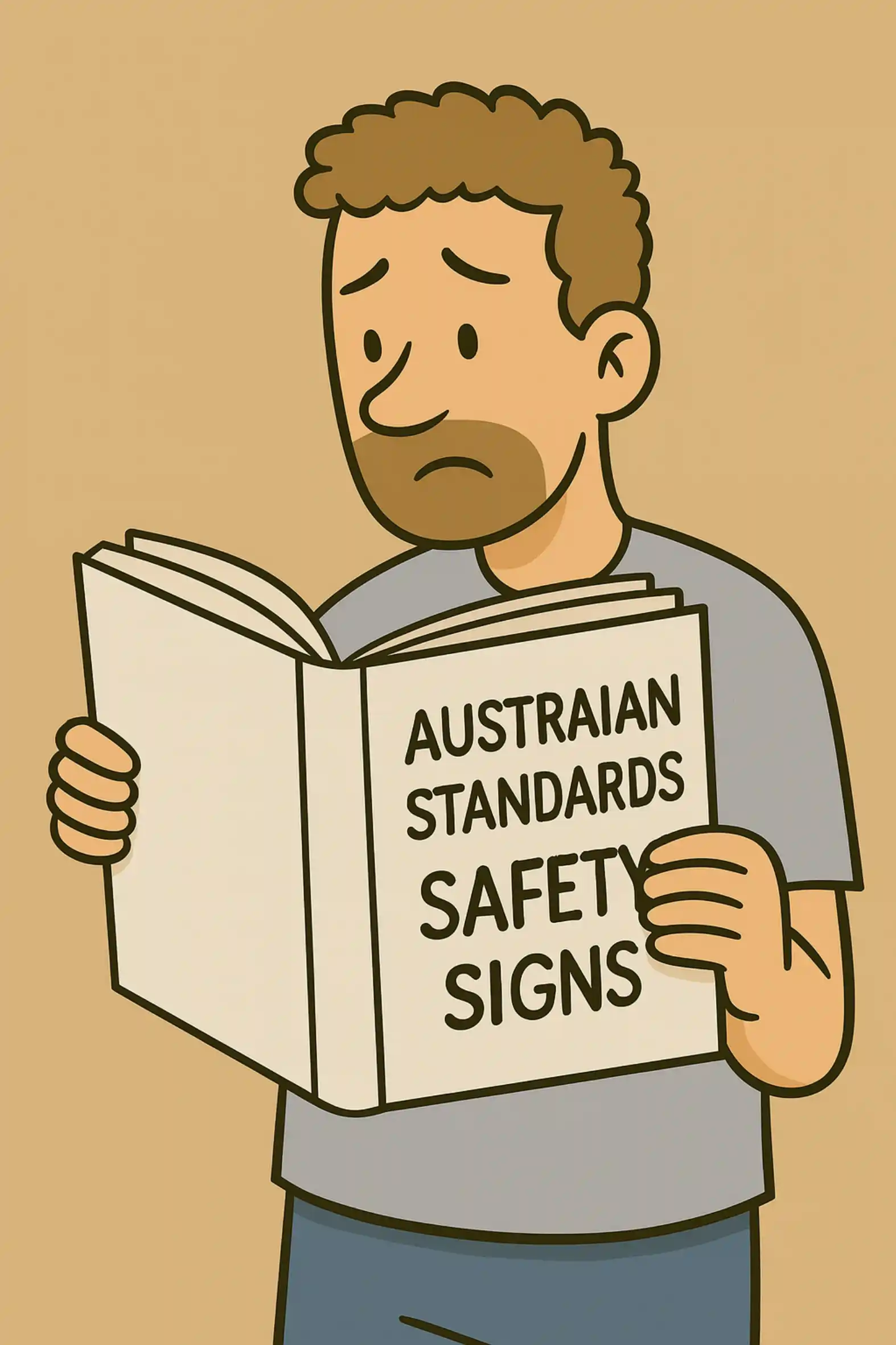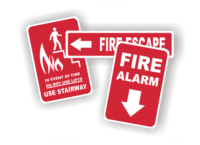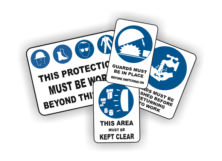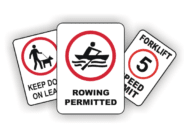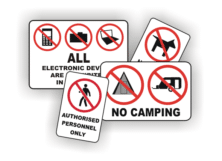Regulatory Safety Signs Explained: Australian Standards AS 1319-1994
In Australia, safety signs are designed in line with AS 1319-1994: Safety Signs for the Occupational Environment. Many of our signs look similar to those used internationally, however, there are some important differences. For example, Danger Signs in Australia follow unique design rules and never include pictograms, whereas overseas signs often do.
To help you clearly understand each type of regulatory safety sign under AS 1319-1994, here’s a breakdown of the main categories:
Danger Signs
Danger Signs are instantly recognisable with their black banner, red oval, and additionally the word “DANGER” in bold white letters.
- Pictograms or symbols are not permitted on Australian Danger Signs.
- The wording must be short, clear, as well as easy to read from a distance.
- These signs are reserved specifically for situations that present a potential risk of death.
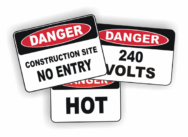
Warning Signs
Warning Signs under AS 1319-1994 are yellow with a black border and text. They can also include a symbol inside a black triangle to highlight the hazard.
- Use for risks that may cause serious injury.
- If the hazard could cause death, you must use a Danger Sign instead.
Examples include electrical hazard signs, high-voltage warnings, and also slippery floor safety signs.
Emergency and First Aid Signs
Emergency and First Aid Signs are green with white text or symbols.
- Emergency Exit Signs use symbols (such as the running man and arrow) for clear, universal recognition.
- First Aid Signs commonly display a white cross on green.
- In Australia, Emergency Assembly Point Signs often contain only text, whereas international versions also include a symbol.
These signs guide workers and visitors to safety equipment and escape routes in case of emergencies.
Fire Safety Signs
Fire Safety Signs are red with white text or symbols. Furthermore they identify the location of fire-fighting equipment.
Common examples include:
- Fire extinguisher signs
- Fire hose reel signs
- Fire door signs (text only)
These signs are critical in ensuring quick response during fire-related emergencies.
Mandatory Signs
Mandatory Signs specify actions that must be carried out. They are typically blue circles with white pictograms or text.
- Examples: “Wear Hard Hat,” “Eye Protection Must Be Worn,” and also “Boots Required.”
- You would use these in construction, mining, and also industrial workplaces.
- You can use multiple instructions, included within a single sign.
These signs ensure compliance with safety protocols as well as reduce workplace risks.
Restriction Signs
Restriction Signs set limits on the use of a facility or activity.
- Usually presented with black text or symbols inside a red circle.
- Common examples:
- Speed restriction signs
- Shared Zone signs
These safety signs help regulate workplace traffic and at the same time maintain order in high-risk areas.
Prohibition Signs
Prohibition Signs clearly show actions or items that are not allowed.
- Designed with a red circle and diagonal slash over a black pictogram.
- Widely used for rules such as:
- No smoking
- No entry
- No parking
There are hundreds of variations, and they play a crucial role in preventing unsafe behaviour.
Why Understanding AS 1319-1994 Safety Signs Matters
Using the correct safety signage is not only a legal requirement in Australia, it is also essential for reducing workplace accidents and improving safety awareness. Incorrect or inconsistent use of signs can lead to confusion, compliance issues, and additionally, potentially severe incidents.

